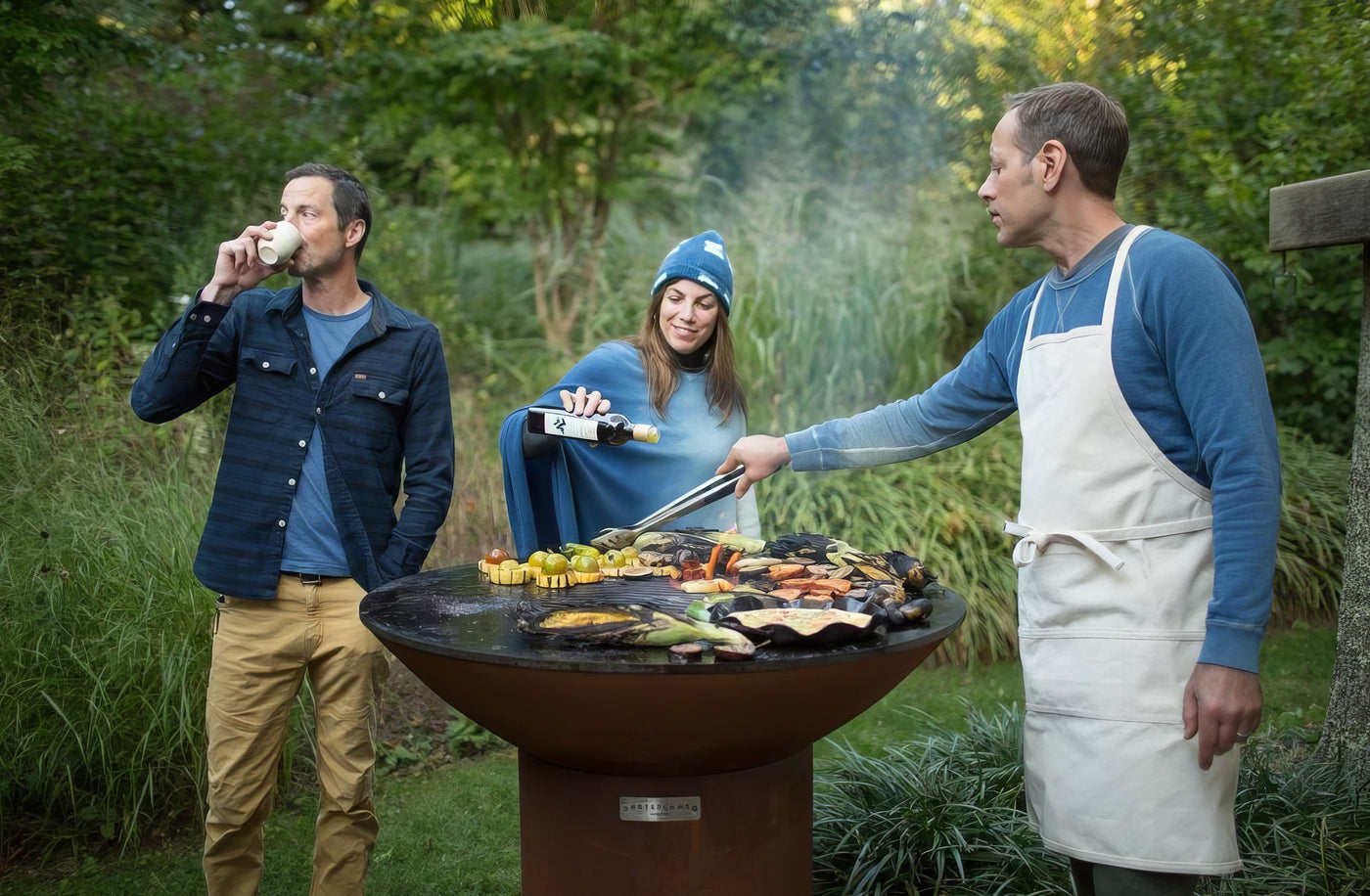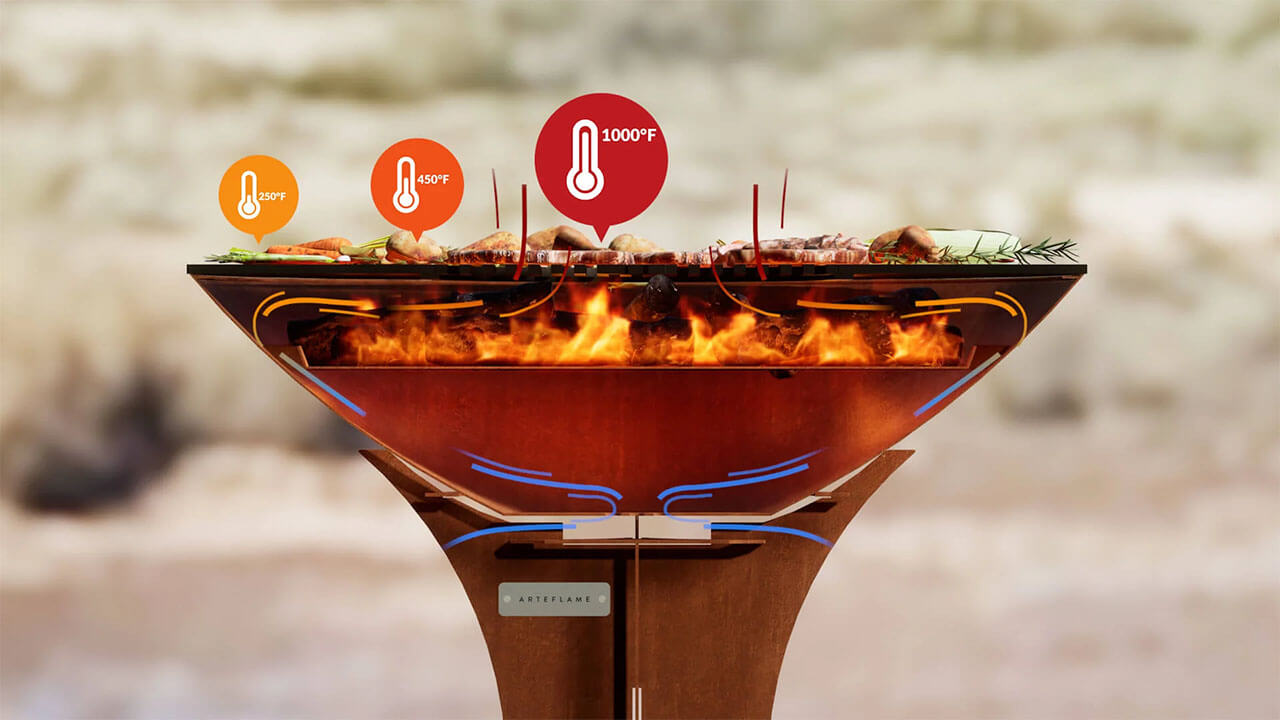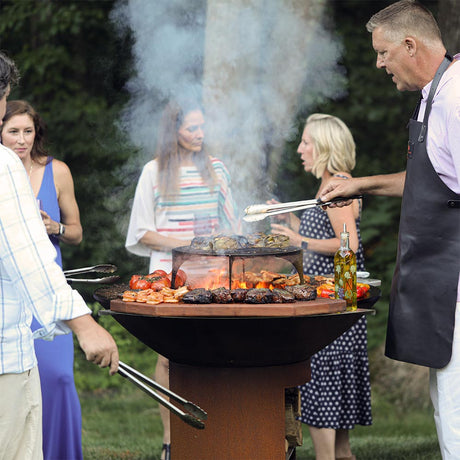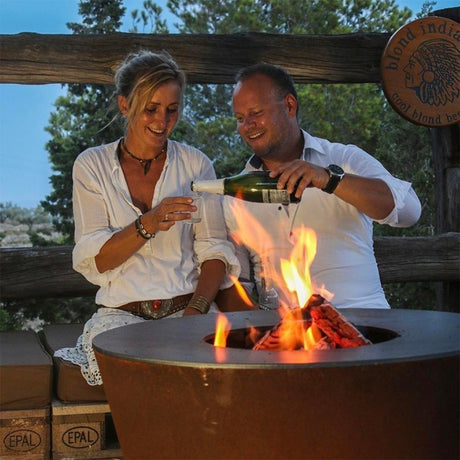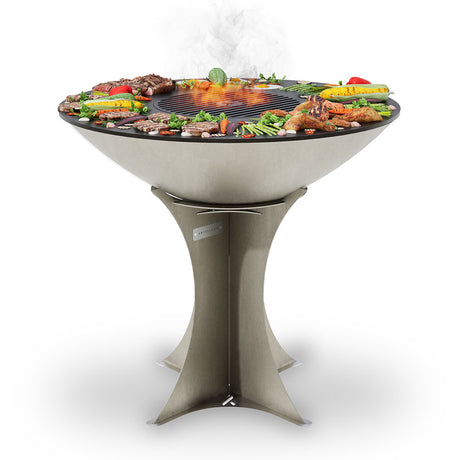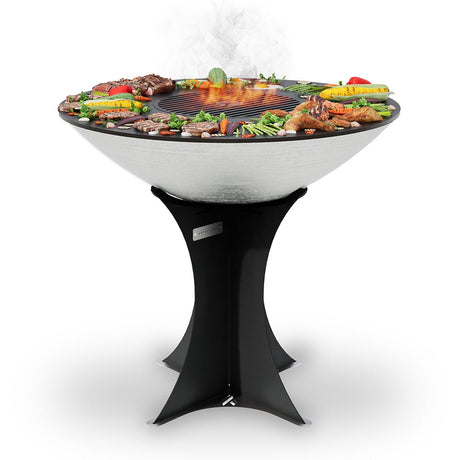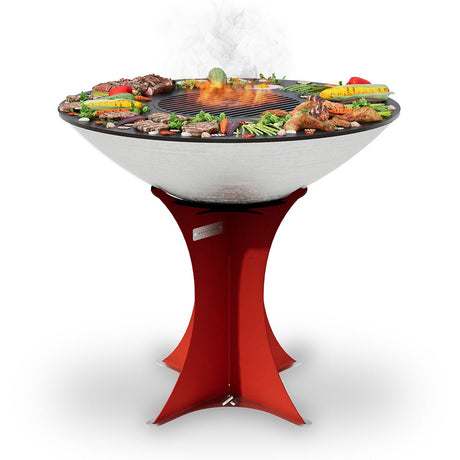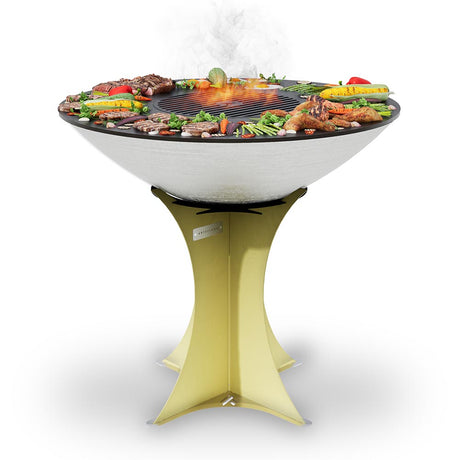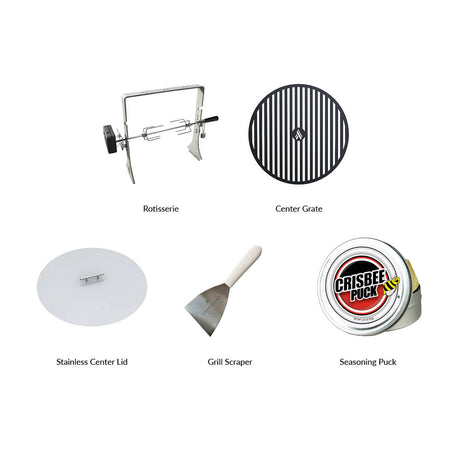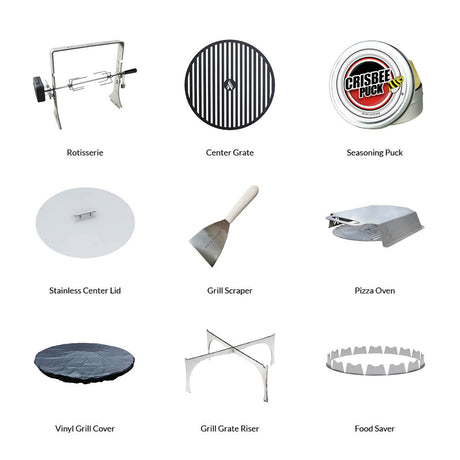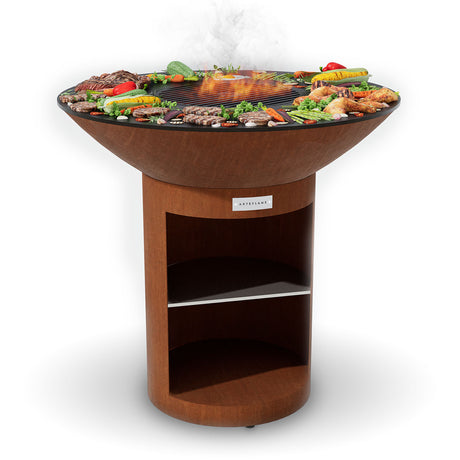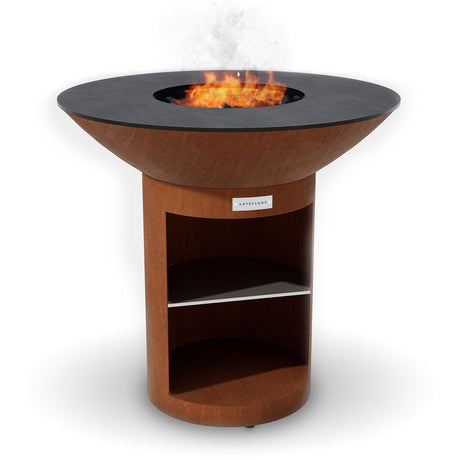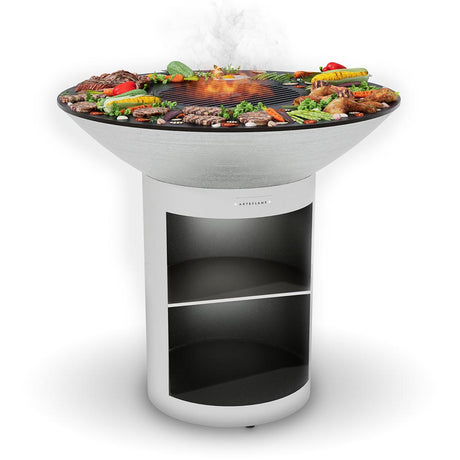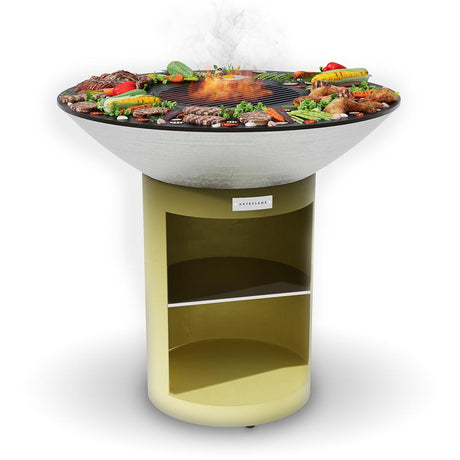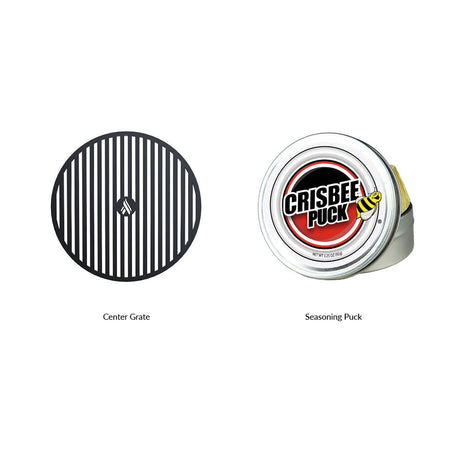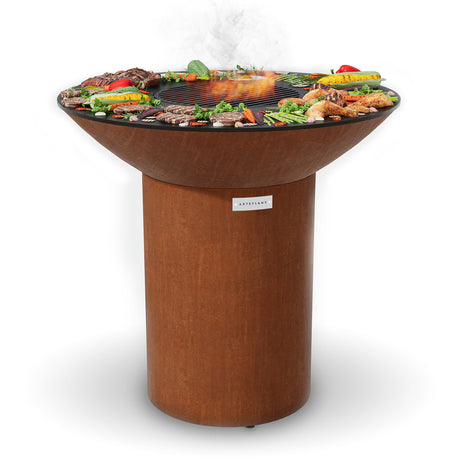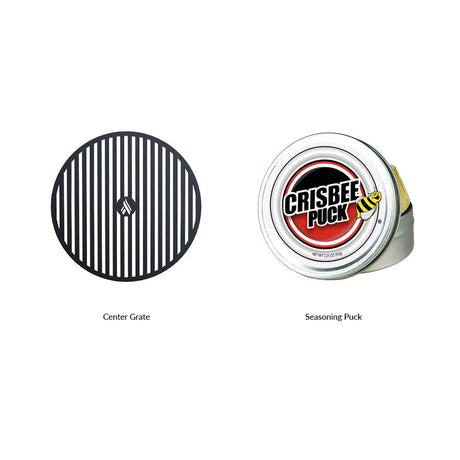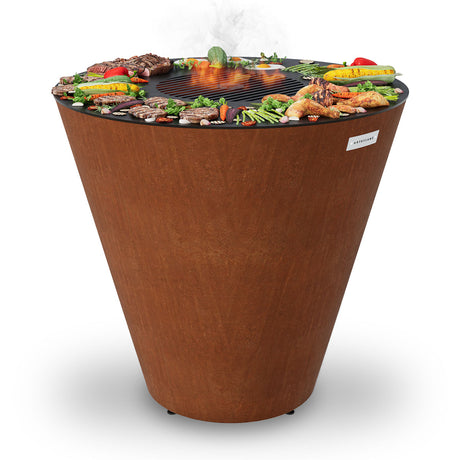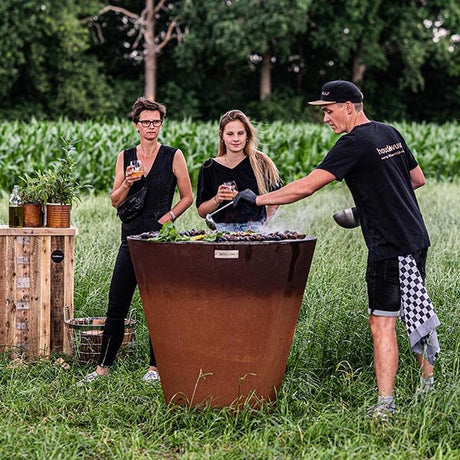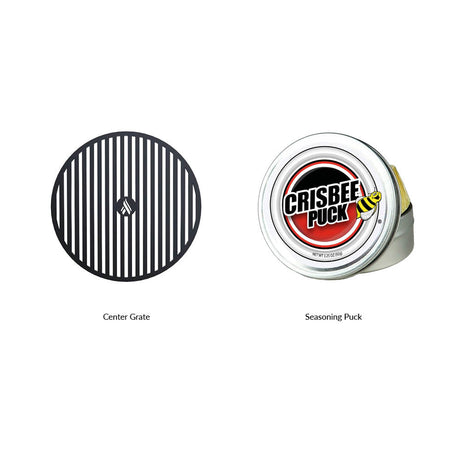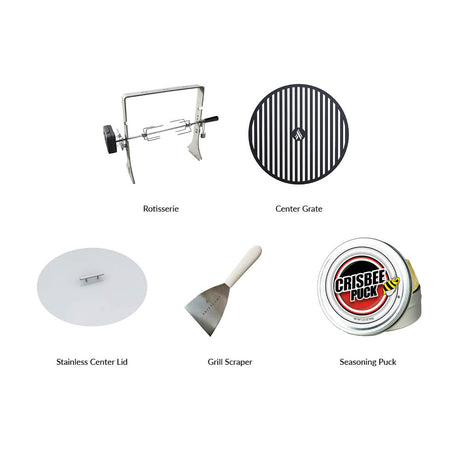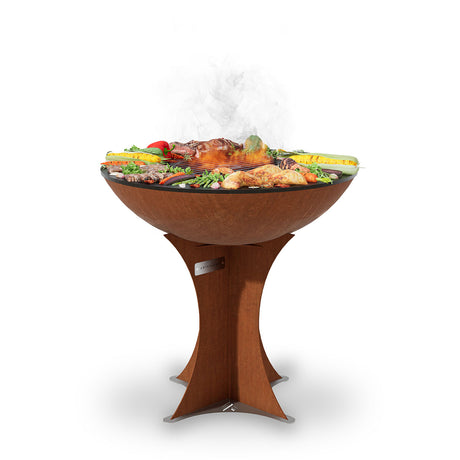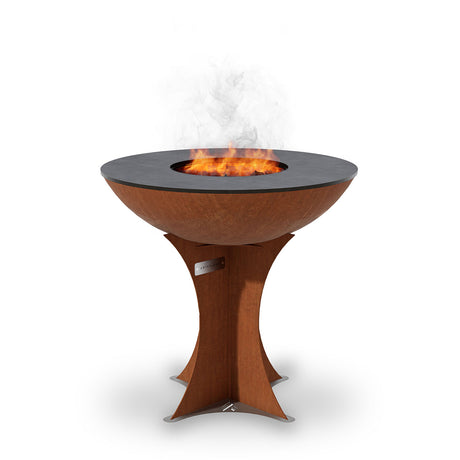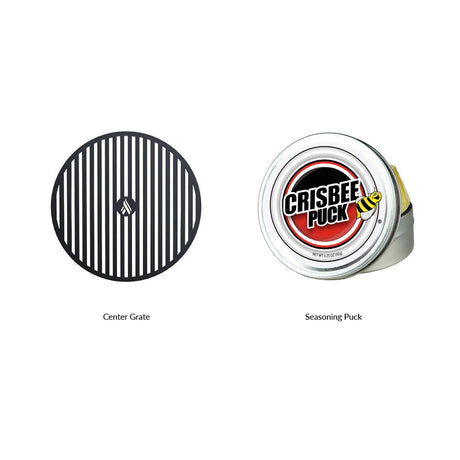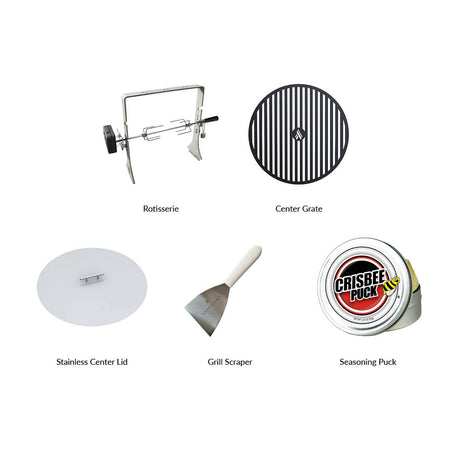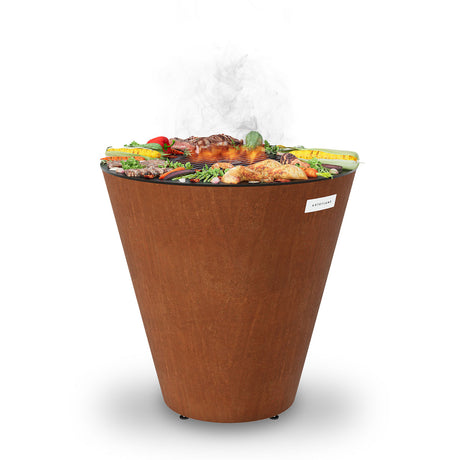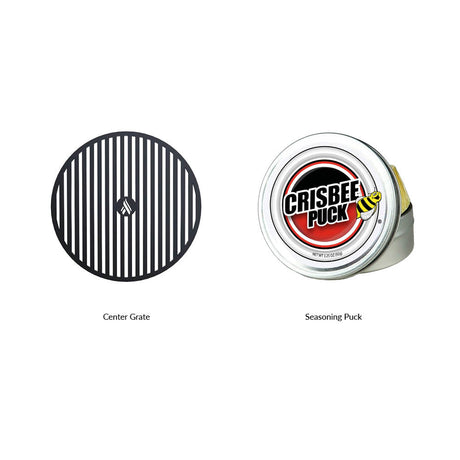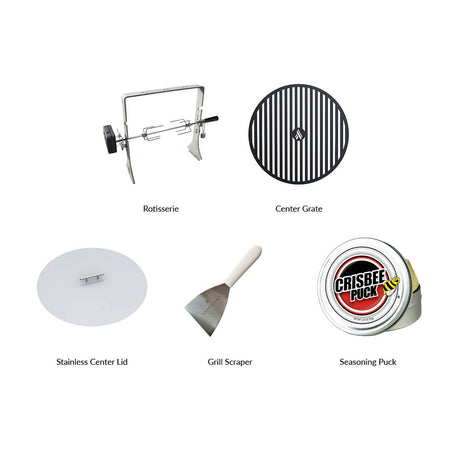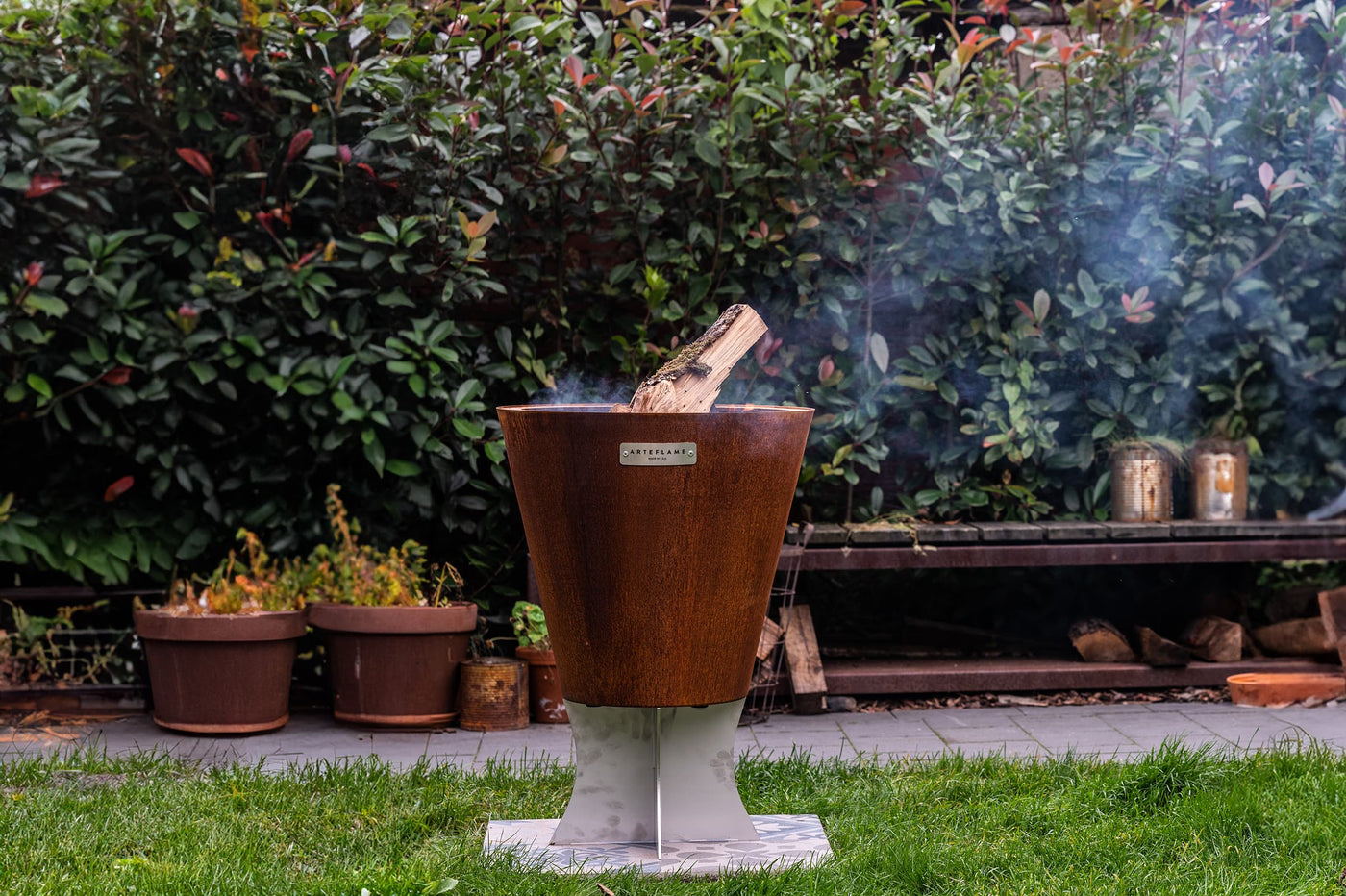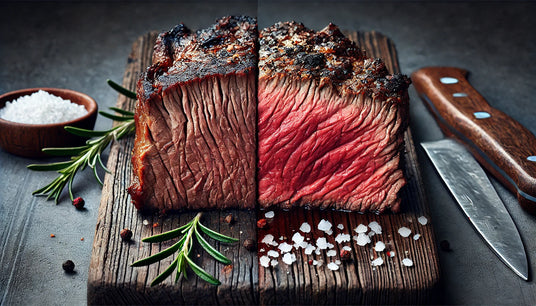
WELCHES IST DAS BESTE?
Für Steakliebhaber ist die Wahl des richtigen Grills die Grundlage für ein außergewöhnliches Grillerlebnis. Die erste große Entscheidung? Holz oder Holzkohle oder Gas. Diese Wahl bestimmt nicht nur den Geschmack Ihres Essens, sondern auch das Maß an Kontrolle und Handwerkskunst, das Sie beim Grillen an den Tag legen. Lassen Sie uns herausfinden, warum Holz- und Holzkohlegrills für diejenigen, die nach Perfektion streben, eine Klasse für sich sind.
Holz- und Holzkohlegrills machen das Grillen zu einer Kunstform und verleihen Ihren Steaks ein reichhaltiges, rauchiges Aroma, das Gasgrills einfach nicht reproduzieren können. Das Aroma und der Geschmack von echtem Holz oder Holzkohle machen Ihre Mahlzeiten zu Gourmetgerichten und sorgen für eine unvergleichliche Geschmackstiefe. Abgesehen vom Geschmack bieten diese Grills eine hervorragende Temperaturkontrolle, sodass Sie die Hitze für jede Zutat genau einstellen können. Diese Präzision stellt sicher, dass jedes Steak perfekt angebraten, gegart und serviert wird, sodass jeder Bissen ein Meisterwerk wird. Wenn Grillen Ihre Leidenschaft ist, gibt es nichts Besseres als die Authentizität und Leistung eines Holz- oder Holzkohlegrills.
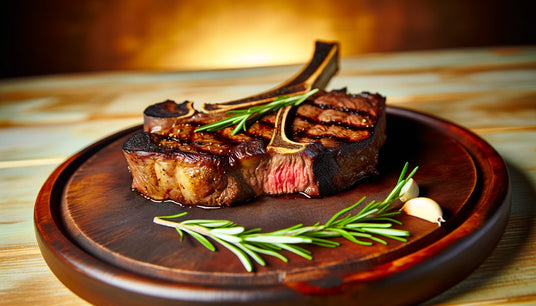
WHY IS A GREAT SEAR IMPORTANT?
When proteins and carbohydrates (sugars) are heated together, the Maillard reaction occurs, which is essential for developing rich and complex flavors in food.
Steakhouses sear over wood at 1,000°F to properly sear the food and enhance its flavor. Arteflame Grills excel at reaching these high temperatures and are perfect for achieving that coveted sear. The intense heat generated by wood or charcoal creates a beautifully caramelized crust on the food, resulting in a more enjoyable dining experience.
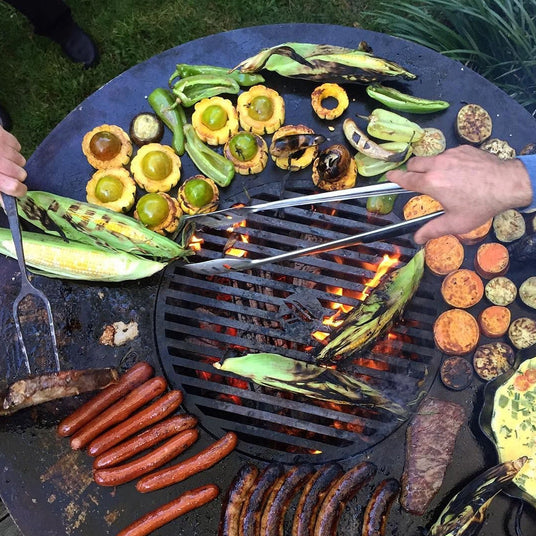
convenience and ease of use
On the other hand, gas grills provide convenience and ease of use. These grills come with adjustable burners that enable temperature control with a simple turn of a knob. Unlike wood grills, there's no need to wait for charcoal to ignite and reach the desired temperature. With a gas grill, you can start cooking immediately. Additionally, gas grills are easier to clean but do require much more maintenance compared to their wood counterparts. Arteflame grills use no valves, switches or gimmicks of any kind that can break.
To summarize, wood grills excel in the realm of flavor, infusing your food with an unrivaled smoky taste that delights the palate. The use of wood or charcoal provides much higher temperatures, ensuring perfect cooking results. On the other hand, gas grills offer convenience.
Armed with a thorough understanding of the benefits associated with both wood and gas grills, you're now equipped to make an informed decision. Consider your personal preferences, cooking style, and the overall grilling experience you desire. Ultimately, the choice between wood/charcoal and gas grills will depend on your specific needs and desires.

GASGESCHMACK VS. HOLZFEUERGESCHMACK
Sind Sie es leid, beim Geschmack Ihres Grillguts Kompromisse eingehen zu müssen? Dann sind Sie hier richtig! Die Lösung für Ihr Problem liegt in der Entscheidung für einen Holzkohlegrill. Es ist an der Zeit, Ihr Grillerlebnis auf die nächste Stufe zu heben und den exquisiten Geschmack zu genießen, den nur ein Holzkohlegrill bieten kann.
Seien wir ehrlich: Der Hauptgrund, warum Menschen das Grillen anderen Kochmethoden vorziehen, ist der unschlagbare Geschmack, den es dem Essen verleiht. Und was den Geschmack angeht, spielt das Grillen mit Holz in einer eigenen Liga. Der einzigartige Geschmack, den ein Holzgrill Ihrem Essen verleiht, lässt sich anderswo einfach nicht reproduzieren.
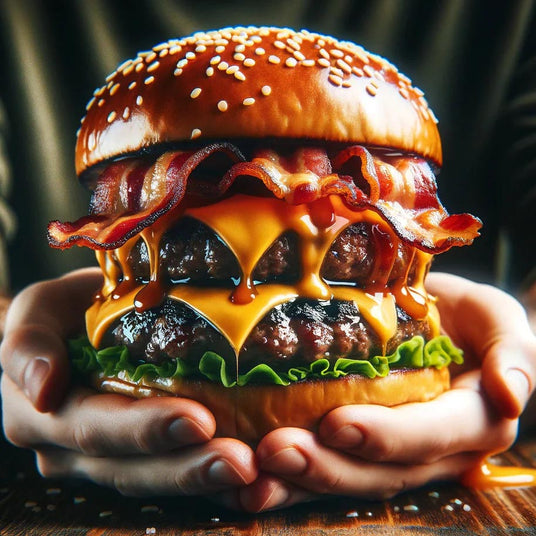
gas grills heat food indirectly
Gas grills heat food indirectly and are not well-suited for proper searing as they typically don't reach the high temperatures required. Although some high-end gas grills have sear burners, they are often small and limited in their capacity.
For those looking to truly indulge in the taste of barbecued food, charcoal and wood grills are the superior choice. The combination of their intense heat and the Maillard reaction guarantees a more flavorful and satisfying meal. So, if taste is your priority, opting for a charcoal or wood-fired grill is the way to go.

taste of wood-fired grilled food
Warum Grillgerichte aus dem Holzofen besser sind als alle anderen
Was macht über Holzkohle gegrillte Speisen so außergewöhnlich? Es sind zwei Schlüsselelemente: Anbraten und Raucharoma. Beim Anbraten bleiben die Säfte im Grill, während eine karamellisierte, aromatische Kruste entsteht, die sowohl die Textur als auch den Geschmack verbessert. Gleichzeitig durchdringt das natürliche Aroma des Holzrauchs Ihr Grillgut und verleiht ihm den unwiderstehlichen Rauchgeschmack, nach dem Sie sich sehnen – ein Geschmack, den kein Gasgrill nachahmen kann.
Apropos Gasgrills: Bedenken Sie Folgendes: Das Propan- oder Erdgas, mit dem sie betrieben werden, ist dasselbe, das auch in Stadtbussen verwendet wird. Wollen Sie wirklich, dass Ihr Essen den Abgasen eines Buses ausgesetzt wird? Das ist wohl kaum der Geschmack, den Sie sich bei Ihrem nächsten Grillfest erhoffen.
Wenn Sie bereit sind, Ihr Grillerlebnis zu verbessern, ist es Zeit, auf einen Holzkohlegrill umzusteigen. Verabschieden Sie sich von Kompromissen und begrüßen Sie unschlagbaren Geschmack. Mit einem Holzkohlegrill ist jeder Bissen ein Erlebnis in rauchiger, karamellisierter Perfektion. Wechseln Sie noch heute – Ihre Geschmacksknospen werden es Ihnen danken!
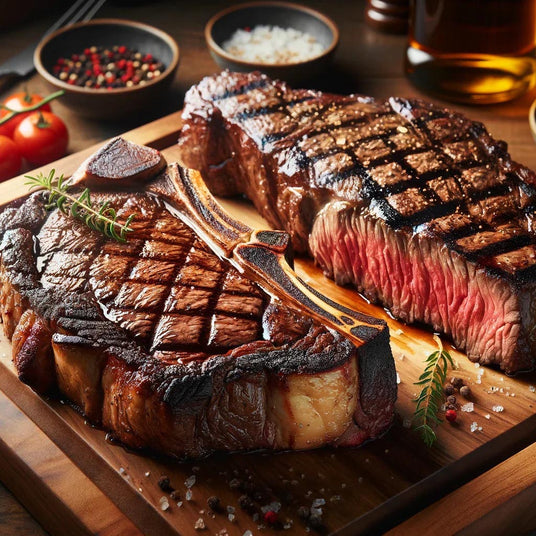
DER SCHLÜSSEL ZU GROSSEN STEAKS
Wenn Sie Fleisch perfekt anbraten möchten, müssen Sie die Grenzen der meisten Gasgrills kennen. Diese Grills können die Oberfläche Ihres Essens zwar „bräunen“, erreichen aber oft nicht die hohen Temperaturen, die für ein optimales Anbraten erforderlich sind.
Der Bräunungsprozess, bekannt als Maillard-Reaktion, beginnt bei etwa 175 °C. Um jedoch wirklich optimale Ergebnisse zu erzielen, muss die Temperatur über 260 °C liegen. Leider führt das Grillen bei niedrigeren Temperaturen zu einer übermäßigen Garung des Fleischinneren, da der Bräunungsprozess zu lange dauert.
Was das Anbraten vom einfachen Bräunen unterscheidet, ist die oberflächliche Dehydrierung und die dadurch entstehende Knusprigkeit des Essens. Dadurch entsteht ein wünschenswerter Texturkontrast zwischen der äußeren Kruste und dem zarten Inneren. Steakhäuser braten ihr Essen bei 1.000 °F an; wenn Sie Steakhouse-Qualität wollen, brauchen Sie Steakhouse-Temperaturen.

Temperaturen über 1.000 °F erreichen
Zum Anbraten ist ein Holzkohle- oder Holzgrill unverzichtbar. Nur wenige Grills können Temperaturen über 1.000 °F erreichen und so die intensive Hitze erzeugen, die zum Erreichen des begehrten Anbratens erforderlich ist.
Wenn Sie nach einem vielseitigen Grill suchen, der bei hohen Temperaturen braten kann und gleichzeitig den Komfort und die Benutzerfreundlichkeit eines Gasgrills bietet, dann ist der Arteflame genau das Richtige für Sie. Dieser innovative Grill vereint das Beste aus beiden Welten und erreicht Steakhouse-Brattemperaturen, die sogar die von herkömmlichen Holzkohlegrills übertreffen.
Obwohl die meisten Gasgrills Lebensmittel bräunen können, ist es eine Herausforderung, die zum richtigen Anbraten erforderlichen Temperaturen zu erreichen. Für diejenigen, die das ultimative Anbraten-Erlebnis suchen, empfiehlt sich ein Holzkohle- oder Holzgrill.
Arteflame XXL 40" Grills
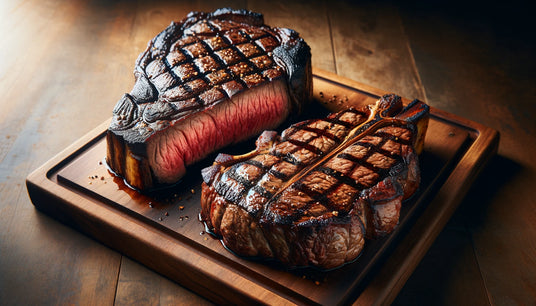
HIGH TEMPERATURE SEARING
FOR STEAKHOUSE QUALITY STEAKS
Steak aficionados, listen up! When it comes to achieving that perfect sear on your favorite cut of meat, the choice of equipment is vital. Steak restaurants rely on gas broilers capable of reaching scorching temperatures of 800°F - 1200°F or, even better, grill over a wood fire at these same temperatures.
To truly replicate the mouthwatering sear commonly found in steakhouses, it is essential to ensure that your gas grill can reach a minimum temperature of 800°F++. However, it's important to note that gas grills meeting these temperature criteria are relatively rare.
In contrast, Arteflame grills are known for their ability to generate intense heat, exceeding 1,000°F. These high temperatures are precisely what you need to create that sought-after edge-to-edge sear on your steak. So, if achieving a seared masterpiece is your goal, an Arteflame grill may be the ideal choice for you.
Remember, when it comes to grilling perfection, don't settle for anything less than the optimal temperature range. Whether you opt for a gas grill that can reach these high temperatures or choose the reliability of an Arteflame, the key is to ensure that your grilling equipment can deliver the intense heat required for a flawlessly seared steak.
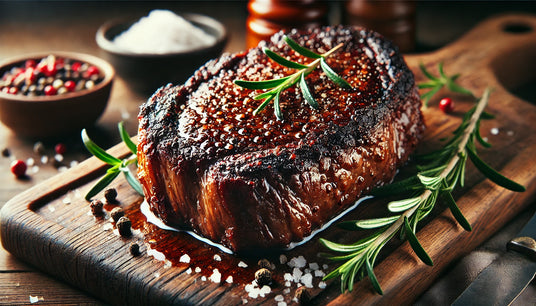
SEARING VS BROWNING,
WHAT'S THE DIFFERENCE?
Bräunen ist eine kulinarische Technik, die, wenn sie präzise ausgeführt wird, Gerichte verwandelt, indem sie Geschmack und Textur verbessert. Um eine schön gebräunte Außenseite zu erreichen und gleichzeitig den idealen Gargrad im Inneren beizubehalten, sind Geschick und Verständnis erforderlich. Der Arteflame-Grill eignet sich hervorragend für diesen Prozess und bietet intensive Hitze für schnelles, gleichmäßiges Anbraten – perfekt für zarte Stücke wie Steaks und Koteletts, da er eine köstliche Kruste und ein saftiges Inneres liefert.
Für zähere Stücke wie Rinderbrust ist die umgekehrte Anbratmethode von unschätzbarem Wert. Bei dieser Technik wird die Innentemperatur bei niedriger Hitze sanft erhöht, bevor das Fleisch bei hoher Hitze angebraten wird, wodurch Zartheit und Geschmack durchgehend gewährleistet werden.
Wenn Sie das Anbraten beherrschen, entfaltet sich eine Symphonie reichhaltiger Aromen, die jedes Gericht zu einem Gourmet-Erlebnis macht. Ob Sie Steaks perfekt anbraten oder Rinderbrust in eine zarte Delikatesse verwandeln, das Anbraten ist eine grundlegende Fähigkeit für jeden Kochliebhaber. Mit etwas Übung offenbart diese Kunst das volle Potenzial Ihrer Zutaten und verleiht jeder Mahlzeit ein unvergleichliches Ergebnis.
ARTEFLAME XL 30" GRILLS
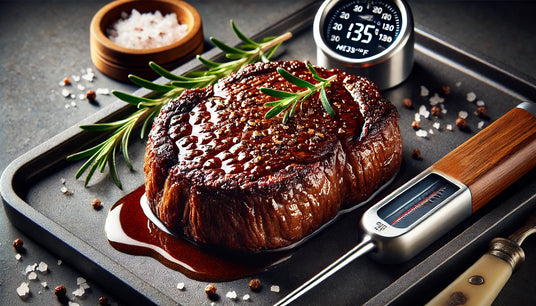
Versuchen Sie es mit dem umgekehrten Anbraten
DAS PERFEKTE STEAK
Die Reverse-Searing-Methode: Perfekt gegarte Ergebnisse wie im Steakhouse
Die Methode des umgekehrten Anbratens ist eine bewährte Technik, um köstliche Steaks mit makelloser Kruste und zartem, saftigem Inneren zuzubereiten. Sie ist das Geheimnis, um zu Hause Ergebnisse in Steakhouse-Qualität zu erzielen. Diese Methode beginnt mit einem intensiven Anbraten bei über 500 °C – dadurch wird der Geschmack eingeschlossen und eine reichhaltige, karamellisierte Kruste erzeugt. Nach dem Anbraten legen Sie das Steak auf die flache Kochplatte, um die Innentemperatur langsam auf den gewünschten Gargrad zu erhöhen.
Für ein perfektes medium-rare Steak bei 135 °F nehmen Sie es bei 120 °F vom Grill, da es während der Ruhezeit weiter gart. Diese Balance aus Anbraten bei hoher Hitze und kontrolliertem Garen sorgt für ein unvergleichliches kulinarisches Erlebnis – jeder Bissen strotzt vor Geschmack und Saftigkeit. Reverse Searing holt das Beste aus Steaks heraus und definiert neu, was auf Ihrem Grill möglich ist.
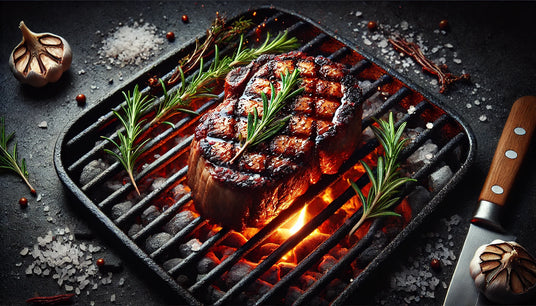
SOUS-VIDE ZUERST,
GRILL ZWEITENS
Veredeln Sie Ihr Steak: Kombinieren Sie Sous-Vide-Präzision mit dem perfekten Anbraten auf dem Holzkohlegrill
Um unvergleichliche Zartheit und Präzision zu erreichen, verlassen sich viele Top-Steakhäuser auf die Sous-vide-Technik. Bei dieser Methode wird das Steak in einem vakuumversiegelten Beutel bei einer genau kontrollierten Temperatur, beispielsweise 54 °C, vier Stunden lang gegart, um eine unvergleichliche Zartheit und Zartheit zu erreichen.
Um den Geschmack zu verbessern, kombinieren Sie Sous-vide mit der rauchigen, hohen Hitze eines Holzkohlegrills. Tupfen Sie das Steak nach dem Sous-vide-Garen trocken, um ein makelloses Anbraten zu gewährleisten – ein entscheidender Schritt, da Feuchtigkeit die Karamellisierung behindert, die die perfekte Kruste bildet.
Für das perfekte Anbraten verwenden Sie einen Grill, der auf 800 °F oder mehr erhitzt ist. Setzen Sie das Steak auf beiden Seiten kurz intensiver Hitze aus, um eine verkohlte, würzige Außenseite zu erhalten, während das saftige, medium-rare Innere erhalten bleibt. Diese Mischung aus Sous-vide-Zartheit und auf Holzkohle angebratenem Geschmack schafft ein unvergleichliches Steakhouse-Erlebnis.
Wenn Sie diese Kombination beherrschen und vor dem Anbraten für eine trockene Oberfläche sorgen, können Sie das volle Potenzial Ihres Steaks ausschöpfen – saftig, zart und voller Geschmack.
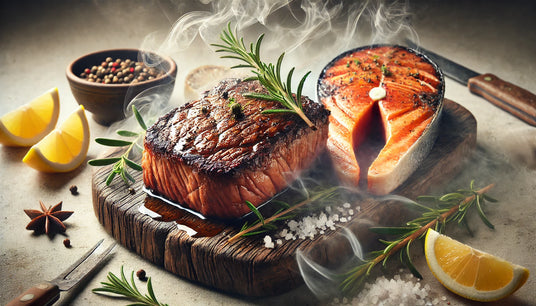
SMOKE FLAVOR AS SEASONING
Entdecken Sie die aromatische Magie des Rauchs beim Grillen mit Holzkohle
Rauch verleiht einen unverwechselbaren Geschmack, der unmöglich zu reproduzieren ist, und poröse Lebensmittel wie Brot nehmen seine reichen Aromen schnell auf. Beim Grillen mit Holzkohle können Sie mit verschiedenen Holzarten experimentieren, von denen jede ihr eigenes, unverwechselbares Rauchprofil beisteuert. Hickoryholz liefert kräftige, reiche Aromen, die perfekt zu Steaks passen, während die subtilen Noten von Erle den Geschmack von Lachs verbessern. Diese Unterschiede ergeben sich aus den natürlichen Verbindungen im Holz, wie Lignin, die zu seinem einzigartigen Charakter beitragen.
Während Holzkohle selbst sauber verbrennt und nur minimalen Rauch erzeugt, entfaltet sich der wahre Geschmackszauber erst, wenn Holz oder Holzstücke hinzugefügt werden. Öle und Tropfen, die auf die Kohlen fallen, können unerwünschte Aromen erzeugen, weshalb die Zugabe von hochwertigem Holz unerlässlich ist, um das gewünschte Rauchprofil zu erzielen. Gasgrills können dies nur schwer nachbilden, da Rauchboxen und lose sitzende Deckel den Rauch nicht effektiv einfangen.
Der Arteflame-Grill zeichnet sich durch perfekt ausgewogene Raucharomen aus. Seine gezielte Luftzirkulation sorgt für eine nahezu vollständige Verbrennung und erzeugt dennoch gerade genug Rauch, um Ihr Essen zu würzen. Für ein noch rauchigeres Aroma legen Sie einfach frisches Holz ins Feuer oder verwenden Sie den optionalen Grillrost, um Ihr Essen direkt in den Rauchstrom zu legen. Diese Vielseitigkeit ermöglicht es Ihnen, jedes Mal den perfekten Rauchgeschmack zu erzielen und Ihr Grillerlebnis auf Gourmet-Niveau zu heben.
